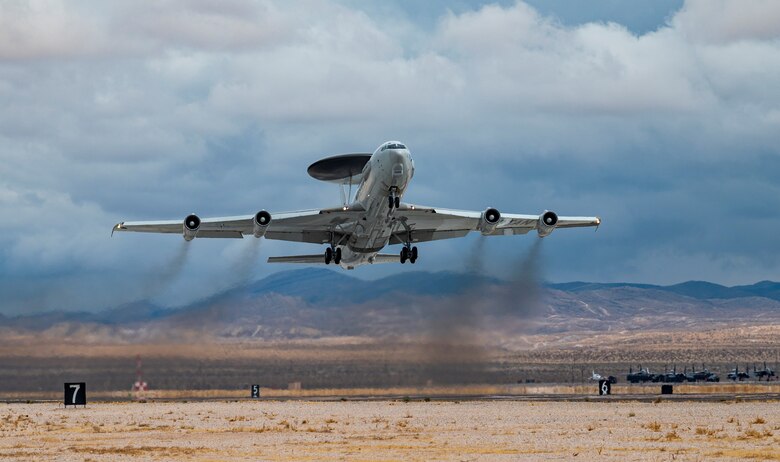Service members from seven NATO member nations are at Nellis Air Force Base, supporting Red Flag 21-2 to test and sharpen their abilities in countering threats while building a cohesive protocol for real-world events.
"For decades, Red Flag has been the world's premier air combat training environment," said Maj. Stephen Wahnon, tactical director and NATO E-3A Airborne Warning and Control System Red Flag detachment commander.
The detachment operates a Boeing 707 derived E-3A Airborne Warning and Control System, or AWACS, aircraft equipped with a state-of-the-art long-range radar, covering a surveillance area of more than 120,000 square miles, which is roughly the size of Poland.
"Every single sortie our unit has flown has provided a tough tactical problem to solve in the mission planning process, and the Aggressors have replicated a formidable adversary during the execution," Wahnon said. "Each of these challenges provides an opportunity to learn and grow as tactical operators through the debrief process."
NATO's mission is to protect the peace and freedom of all its participating nations and provide the possibility to act united when needed.
"We supply coordination and communication between the flying elements," said German Air Force Capt. Christoph Zurman, a pilot assigned to Flying Squadron 1. "We supply passive detection and radar. Lastly, we supply the needed knowledge of Airborne Early Warning, so aircrews can learn how to utilize our abilities to the greatest extent, getting a more synchronized and cooperative team across joint operations."
Red Flag exercises strive to increase the interoperability of U.S. and allied forces to create agile problem-solvers with the ability to correct decision-making under incredible pressure.
"Confidence under fire is one of Red Flag's priorities," said Col. William Reese, 414th Combat Training Squadron commander. "We purposely focus on new mission commanders and wingmen to put them in difficult, non-permissive environments, to see how they'll perform. We will shoot at them, distract them and prevent them from accomplishing their mission objectives in a safe and secure environment.
"Early on, they make a lot of mistakes; however, and as a true testament to the advantage we have with the quality of our U.S. and coalition Airmen, they learn rapidly and overcome all of these obstacles achieving mission success. It's very impressive and powerful to witness every Red Flag," he added.
With mobility as an airborne warning and control system, the E-3A has a greater chance of surviving in warfare than a fixed, ground-based radar system. Among other things, E-3A can quickly change its flight path according to mission and survival requirements.
The NATO E-3A AWACS provides battle management and command and control to Red Flag 21-2 and has participated in all of the mission set, both offensive and defensive.
"We're grateful for the opportunity to train among our partnered nations to strengthen not only our tactical edge but our strategic resolve," Wahnon said.

A NATO E-3A Airborne Warning and Control System, or AWACS, assigned to the NATO Early Warning and Control Force at Geilenkirchen NATO Air Base, Germany, takes flight during Red Flag 21-2 at Nellis Air Force Base, Nev., March 12, 2021. The E-3A AWACS aircraft is an aircraft with integrated command and control battle management, surveillance, target detection and tracking platform. (U.S. Air Force photo by William R. Lewis)






